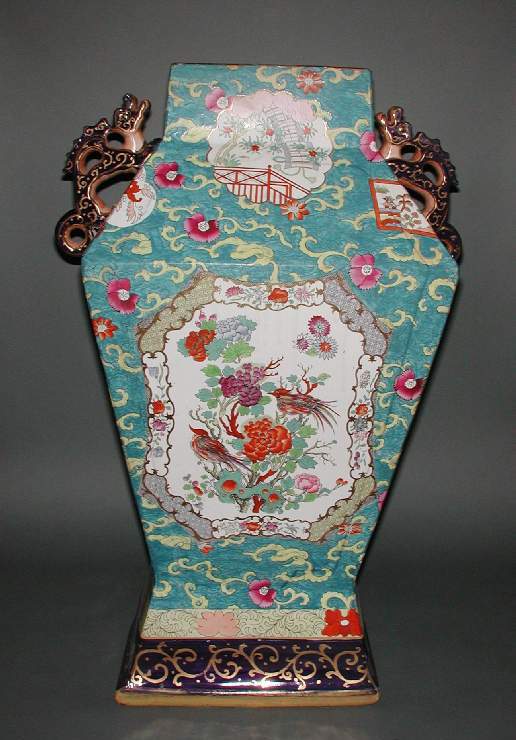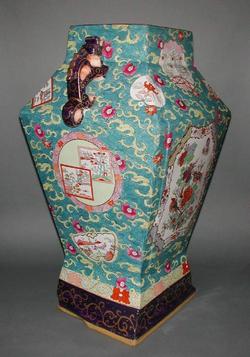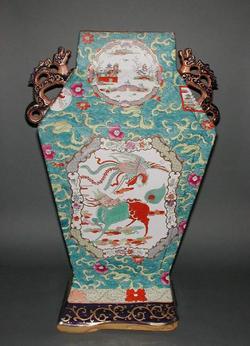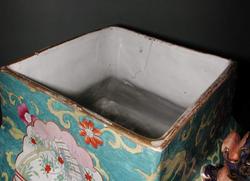Current Location: In storage
Maker(s)
Production:
C. J. Mason & Co.
Entities
Categories
Description
Granite china (stone china), transfer-printed, painted in polychrome enamels, and gilt.
Notes
History note: G.E. Pritchett, FSA , FRIBA (1842-1912), Oak Hall, Chantry Road, Bishops Stortford; his posthumous sale, 9 July 1912; purchased for £16 16s. 0d. by Mr G.R. Piper of Bishops Stortford on behalf of Dr J.W.L. Glaisher, FRS, Trinity College, Cambridge
Legal notes
Dr J. W. L. Glaisher Bequest
Measurements and weight
Height: 122 cm
Acquisition and important dates
Method of acquisition: Bequeathed
(1928-12-07)
by
Glaisher, J. W. L., Dr
Dating
19th Century, second quarter
Circa
1826
CE
-
Circa
1845
CE
Note
Mason's 'Ironstone' (sometimes referred to by the firm as 'granite china', quickly became fashionable and maintained its popularity despite competition from stone chinas introduced by Spode, Davenport and other manufacturers. Its strength made it particularly suitable for dinner services, jugs, and large ornamental wares, a high proportion of which were decorated with brightly coloured 'Japan' (Imari style) or other Oriental patterns. Unfortunately mass production sometimes resulted in poor workmanship and this must have contributed to Mason's downfall. A close look at this immense hall or alcove vase reveals that the enamelling was applied rather carelessly. Nevertheless it is an eye-catching and rare survivor of the nineteenth-century taste for large ostantatious ceramics.
Stone china was more durable than creamware or pearlware and closer to Oriental porcelain in appearance, although not translucent. The first patent for such a body was taken out by John and William Turner in 1800. Another patent, for what became known as 'Ironstone China' was granted to Charles James Mason (1791-1856) in 1813. In that year he and his two brothers purchased the Fenton Stone Works, whjich is illustrated in the mark on this vase. Mason remained there until 1848 when he was declared bankrupt, sold the works, and moved to the Daisy Bank Pottery in Longton. He recovered sufficiently to exhibit at the Great Exhibition in 1851 and finally retired from business in 1853.
School or Style
Oriental style
People, subjects and objects depicted
Components of the work
Decoration
composed of
ceramic printing colour
enamel
gold
Materials used in production
a form of stone china
Granite china
Techniques used in production
Moulding
Inscription or legends present
Inscription present: the o of Co is raised
- Text: a view of the factory with below within a wreath, 'FENTON/STONE WORKS/C.J.M. & Co and outside the wreath, STAFFORDSHIRE POTTERIES GRANITE CHINA
- Method of creation: Inside cover and on base of base
- Type: Factory mark
References and bibliographic entries
Identification numbers
Accession number: C.1280 & A-1928
Primary reference Number: 71717
Old object number: 3529
Stable URI
Audit data
Created: Saturday 6 August 2011
Updated: Tuesday 30 April 2024
Last processed: Thursday 14 August 2025
Associated departments & institutions
Owner or interested party:
The Fitzwilliam Museum
Associated department:
Applied Arts








